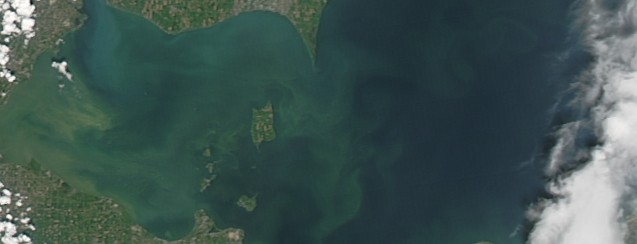
Biosensor detects toxins in water sources
UC environmental engineers’ research featured in NSF video
University of Cincinnati environmental engineers and chemists developed a biosensor to detect toxins in surface water such as streams, rivers and lakes. Funded through National Science Foundation (NSF) grants, the research was recently featured in an NSF video.
The research is led by Dionysios Dionysiou, professor of environmental engineering, and addresses the importance of detecting toxic products of cyanobacteria algal blooms, which are formed mainly by agricultural runoff. Project collaborators at UC include Vesselin Shanov, professor of chemical engineering; Ryan White, associate professor of electrical engineering and chemistry; and Bill Heineman, professor of chemistry.
The research team, including research assistant and environmental engineering Ph.D. student Vasileia Vogiazi whose work was featured in a previous article, created a sensor to identify and measure microcystins. These toxins are produced from algal blooms and can cause skin irritation, nausea or vomiting if swallowed, and liver damage if large amounts are ingested. Understanding the toxin’s impact on the water supply can aid water treatment plants to adjust the treatment strategy to keep these microcystins from contaminating drinking water.
Video courtesy of National Science Foundation.
Featured image at top: A satellite image of algal blooms on Lake Erie. Photo/Nasa.
Related Stories
Rod Serling’s early career preserved by UC professor
October 6, 2025
A recent Ohio Newsroom feature spotlights University of Cincinnati Professor Emeritus H. Michael Sanders and his research on Twilight Zone creator Rod Serling’s early career in Cincinnati.
Politics follow you on the road
October 6, 2025
Researchers at the University of Cincinnati found that drivers were far more likely to honk after being cut off by a vehicle bearing a political bumper sticker, particularly one for the opposing political party.
Is dark energy born inside black holes?
October 6, 2025
UC physicist talks to Scientific American about a new theory to explain why the universe is expanding at an accelerating rate.
